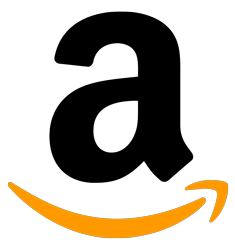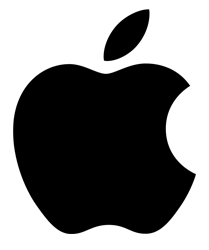What’s next for Apple and Amazon?
What’s next for Apple and Amazon?
The world’s most valuable company won’t buy Disney anytime soon, but there’s a giant caveat. Plus, what else will the e-commerce giant do with Amazon One, its new biometric payment platform?
By Brad Berens

 Being a futurist can be glum when other writers breathlessly announce new-to-them ideas that I’ve been talking about for years while missing the broader implications. This happened twice in the last few days.
Being a futurist can be glum when other writers breathlessly announce new-to-them ideas that I’ve been talking about for years while missing the broader implications. This happened twice in the last few days.
#1: Will Apple Buy Disney? (Answer: no time soon, but…)
A spate of writers (e.g. here, here, and here) have predicted that Apple will buy the Walt Disney Company. Argh! I started writing about this in 2018, having talked about it on keynote stages even earlier. Today, with Disney CEO Bob Iger needing to turn profitable, with even more studio consolidation inevitable, and with Apple having entered the entertainment biz, acquiring Disney would instantly make it the biggest entertainment company on the planet.
On top of Disney’s immense content library and theme parks ripe for hardware and software integration, every TV show and movie set in the present or near future would become opportunities for product placement (like in Shrinking on AppleTV+ where key emotional moments happen via iPhones).
The missed broader implication? I still think this will happen someday, but in the short term, Apple really only wants ESPN.
In a recent CNBC interview, Iger said that Disney wants to pull ESPN out of the Cable TV business and make it purely streaming. This would instantly make it a tasty acquisition target for Apple. Buying ESPN, Apple would plug it into its other sports programming and become the dominant sports watching platform without messy legacy cable entanglements. AppleTV+ would become a must-have subscription for all sports fans, rather than a nice-to-have one for people who are curious about Ted Lasso.
More importantly, this would accelerate Apple’s growing integrated subscriptions business that includes Music, iCloud, News, Games, and Fitness. Also, to reach ESPN, sports fans would have to visit Apple’s App Store, which would then guide new attention to the company’s other offerings.
There’s more: the advertising impact is enormous. Let me be clear: I think that Apple is genuinely interested in presenting a more privacy focused alternative to Google’s Android, which is why iPhone users have gotten to click the “no, don’t track me please” option for every app so that the apps don’t use their data to serve them targeted ads.
But I also think that stopping other companies from getting data on Apple users makes Apple’s own data about its users infinitely more valuable to advertisers. Today, the digital ad duopoly (Facebook and Google) is rapidly becoming a triopoly (with Amazon), but the coming quadropoly will include Apple.
By the way, if Disney does transmogrify ESPN into streaming only, then the other two bidders will be Amazon and YouTube.
#2: Amazon One, Payments, and Two-Strategy Strategies
On August 11th, the typically brilliant Christopher Mims had a subpar Wall Street Journal column with the headline: “Amazon Wants You to Pay With Your Palm. It’s a Sneak Attack on Apple and Google.” (I doubt Mims wrote that headline.)
This is hardly a sneak attack: it’s a direct one. Since Amazon’s Fire Phone failed in 2015, the company has known that it needed other routes to become the default computing device in customers’ lives.
This is why back in 2017 the company announced Alexa-enabled glasses frames. As I wrote at the time:
Alexa-enabled glasses would put a microphone on the user’s face that is always there, always listening, so the wearer can ask Alexa a question without having to touch her or his smart phone app. (And, yes, wearing a listening device on your face is creepy.)
Amazon’s glasses are an attempt to have Alexa shove her way in front of Siri to help the user with whatever task is at hand, but the technology still depends on a smartphone manufactured by a company that wasn’t Amazon.
Enter Amazon One: instead of reaching for your wallet, credit card, or smartphone to use Apple Pay or Google Pay, you just use your palm print to pay with Amazon One. Back in April of 2022 in “Amazon’s New Pay-With-Your-Palm Tech and its Implications,” I did a deep dive into what this means for competing payment platforms and the banking industry overall.
Whenever Amazon does something, the most important question to ask is “what’s the second strategy?” Amazon builds capabilities for its own use and then rents out the unused portion to other companies. This is how Amazon Web Services came to be, as well as Marketplace, Fulfilled by Amazon, the Kindle self-publishing platform, and more.
Mims’ column tells us that Amazon is already doing this by enabling payments for Aramark’s sports and entertainment division, making it easier to buy beer at a ballgame without laborious age verification by using palm prints.
The missed broader implication? Amazon One has immensely more potential to change people’s lives outside of payments as the hardware part of the technology gets smaller—with smart locks.
Automotive: Amazon One will enable people to get into their cars without keys, fobs, or smartphone apps. (Amazon already has Alexa deeply integrated into a range of cars.) This will also make it harder for car thieves to practice their vocation.
Hotels and AirBNB: No checking in, no awkward lockboxes, no “find the key inside the fake rock,” with Amazon One guests will use their palms to get into rooms or rentals.
Plus, since a guest’s Amazon account is already tied to that new location, ordering food or things accidentally left behind or watching Amazon Prime videos on the TV screen become effortless.
Delivery (this is the big one): Amazon’s core e-commerce business has always been vulnerable to miscreants stealing packages off the porch.
Amazon One will integrate with the company’s Ring smart home products (the doorbells with built-in cameras and more) so that the Amazon delivery person can open the front door, drop packages inside, and then relock the door. The more security-minded customers will be able to clear the delivery person via a quick videoconference, but they’ll quickly get used to this and then not bother.
For groceries, the potential is even greater. Amazon already has Amazon Key, which delivers packages to a garage, and Walmart has been experimenting with to-the-fridge delivery. Amazon One will let the delivery person put the milk directly into the fridge and the ice cream into the freezer.
Amazon always has a second strategy. In this case, by making it easier for customers to unlock their worlds Amazon One will also lock in those customers’ loyalties to Amazon.
__________

Brad Berens is the Center’s strategic advisor and a senior research fellow. He is principal at Big Digital Idea Consulting. You can learn more about Brad at www.bradberens.com, follow him on Post and/or LinkedIn, and subscribe to his weekly newsletter (only some of his columns are syndicated here).
See all columns from the Center.
August 23, 2023

